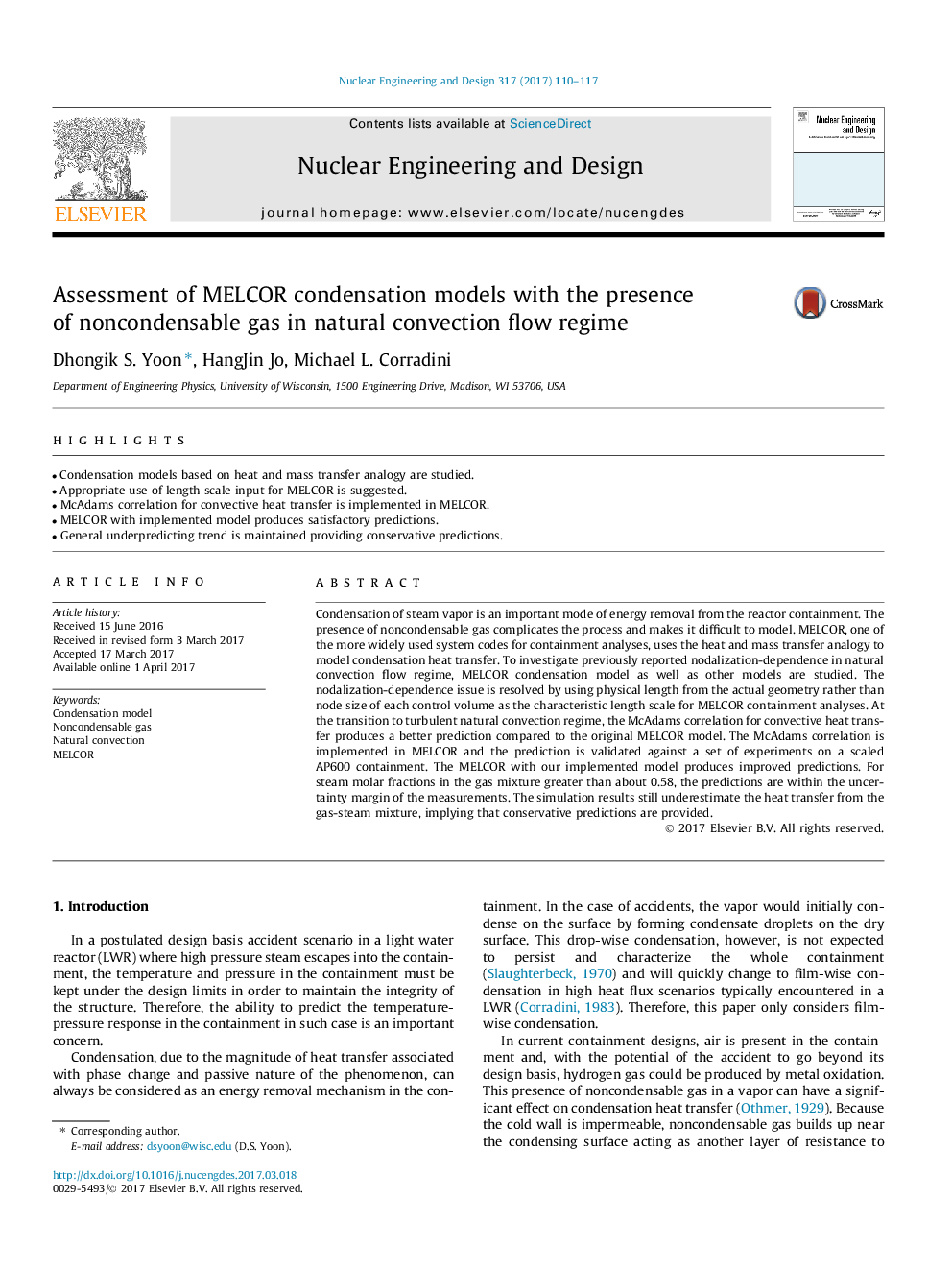| Article ID | Journal | Published Year | Pages | File Type |
|---|---|---|---|---|
| 4925600 | Nuclear Engineering and Design | 2017 | 8 Pages |
•Condensation models based on heat and mass transfer analogy are studied.•Appropriate use of length scale input for MELCOR is suggested.•McAdams correlation for convective heat transfer is implemented in MELCOR.•MELCOR with implemented model produces satisfactory predictions.•General underpredicting trend is maintained providing conservative predictions.
Condensation of steam vapor is an important mode of energy removal from the reactor containment. The presence of noncondensable gas complicates the process and makes it difficult to model. MELCOR, one of the more widely used system codes for containment analyses, uses the heat and mass transfer analogy to model condensation heat transfer. To investigate previously reported nodalization-dependence in natural convection flow regime, MELCOR condensation model as well as other models are studied. The nodalization-dependence issue is resolved by using physical length from the actual geometry rather than node size of each control volume as the characteristic length scale for MELCOR containment analyses. At the transition to turbulent natural convection regime, the McAdams correlation for convective heat transfer produces a better prediction compared to the original MELCOR model. The McAdams correlation is implemented in MELCOR and the prediction is validated against a set of experiments on a scaled AP600 containment. The MELCOR with our implemented model produces improved predictions. For steam molar fractions in the gas mixture greater than about 0.58, the predictions are within the uncertainty margin of the measurements. The simulation results still underestimate the heat transfer from the gas-steam mixture, implying that conservative predictions are provided.
